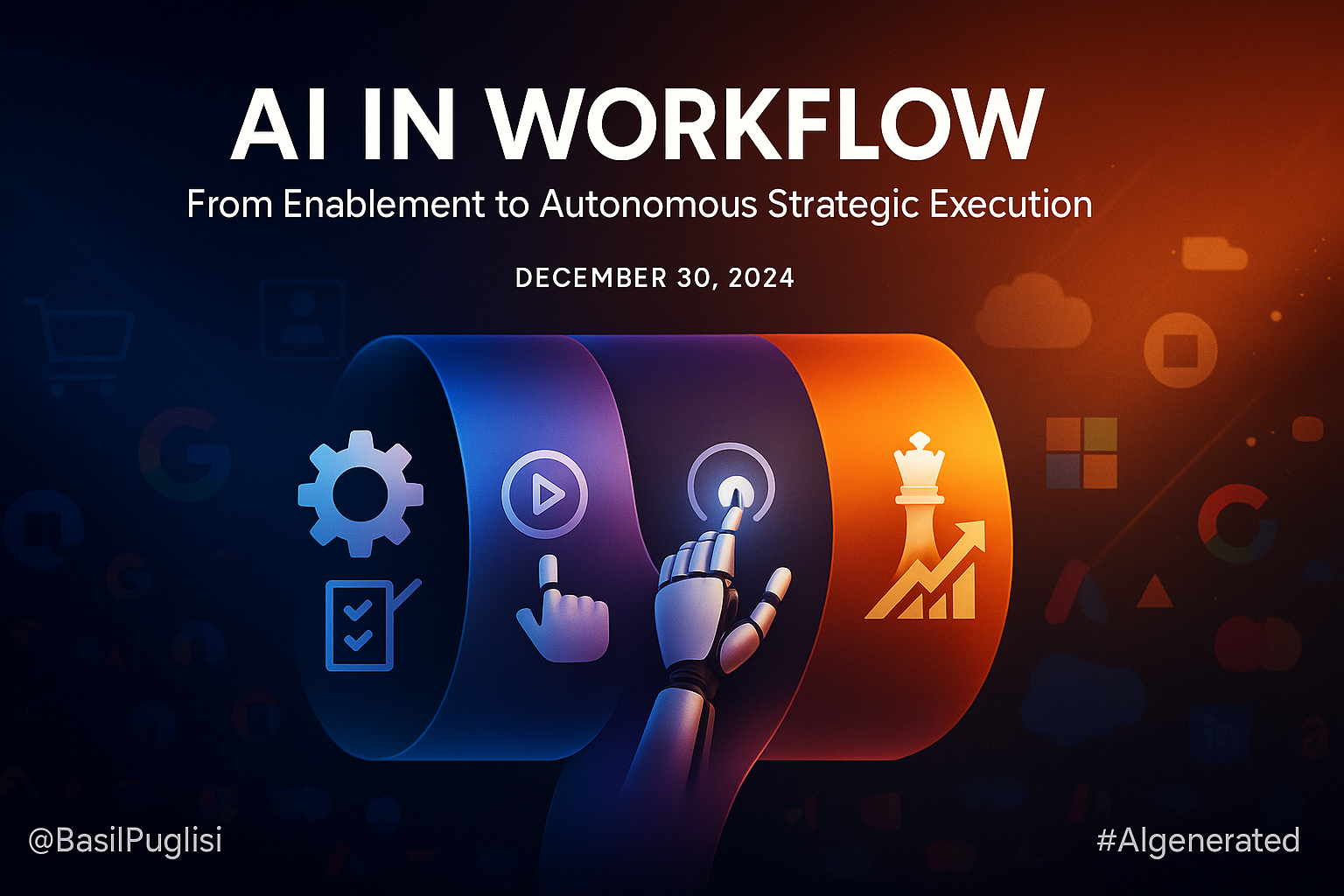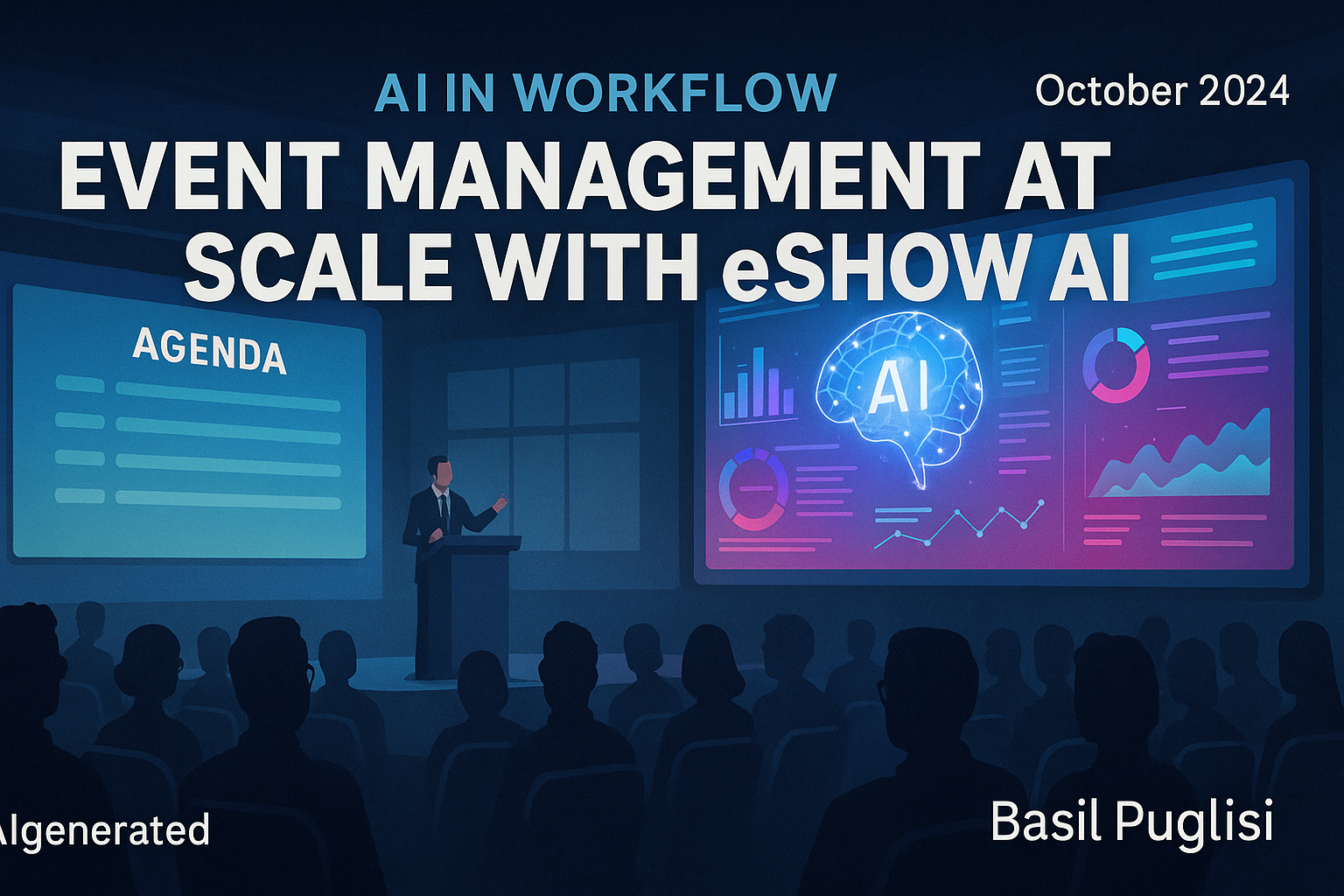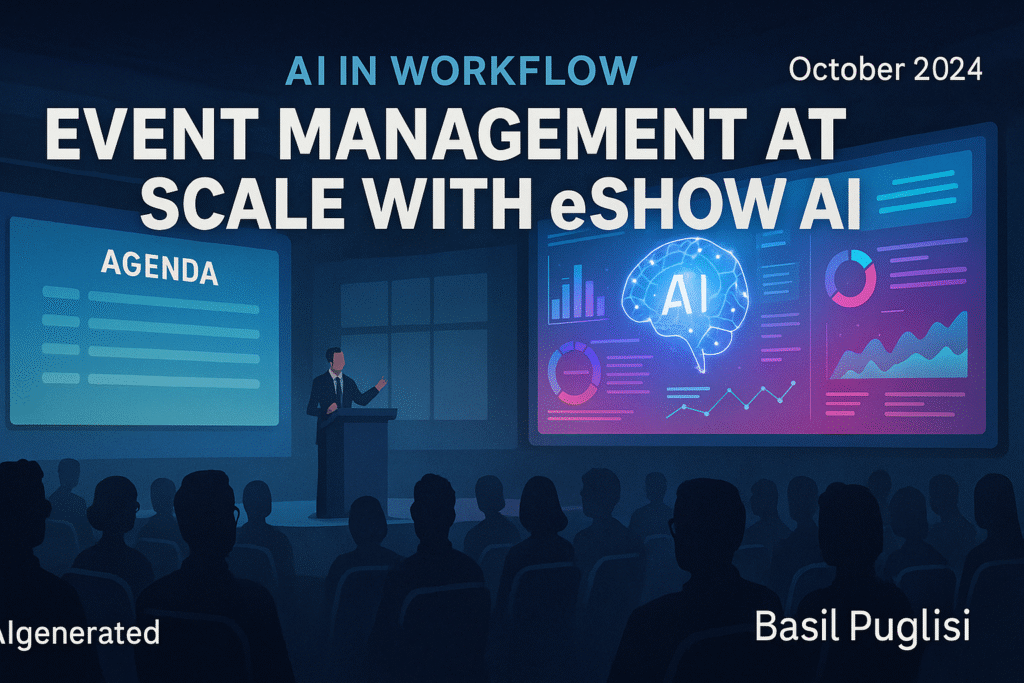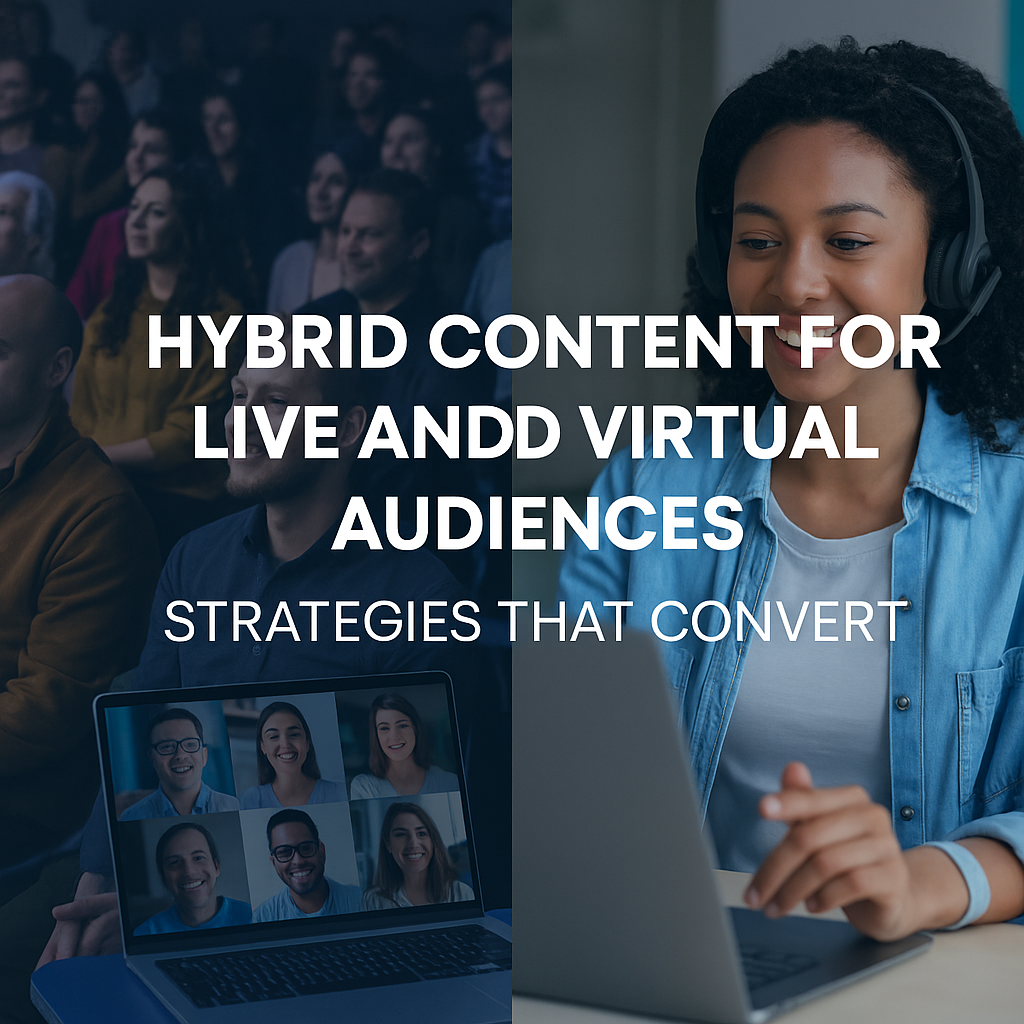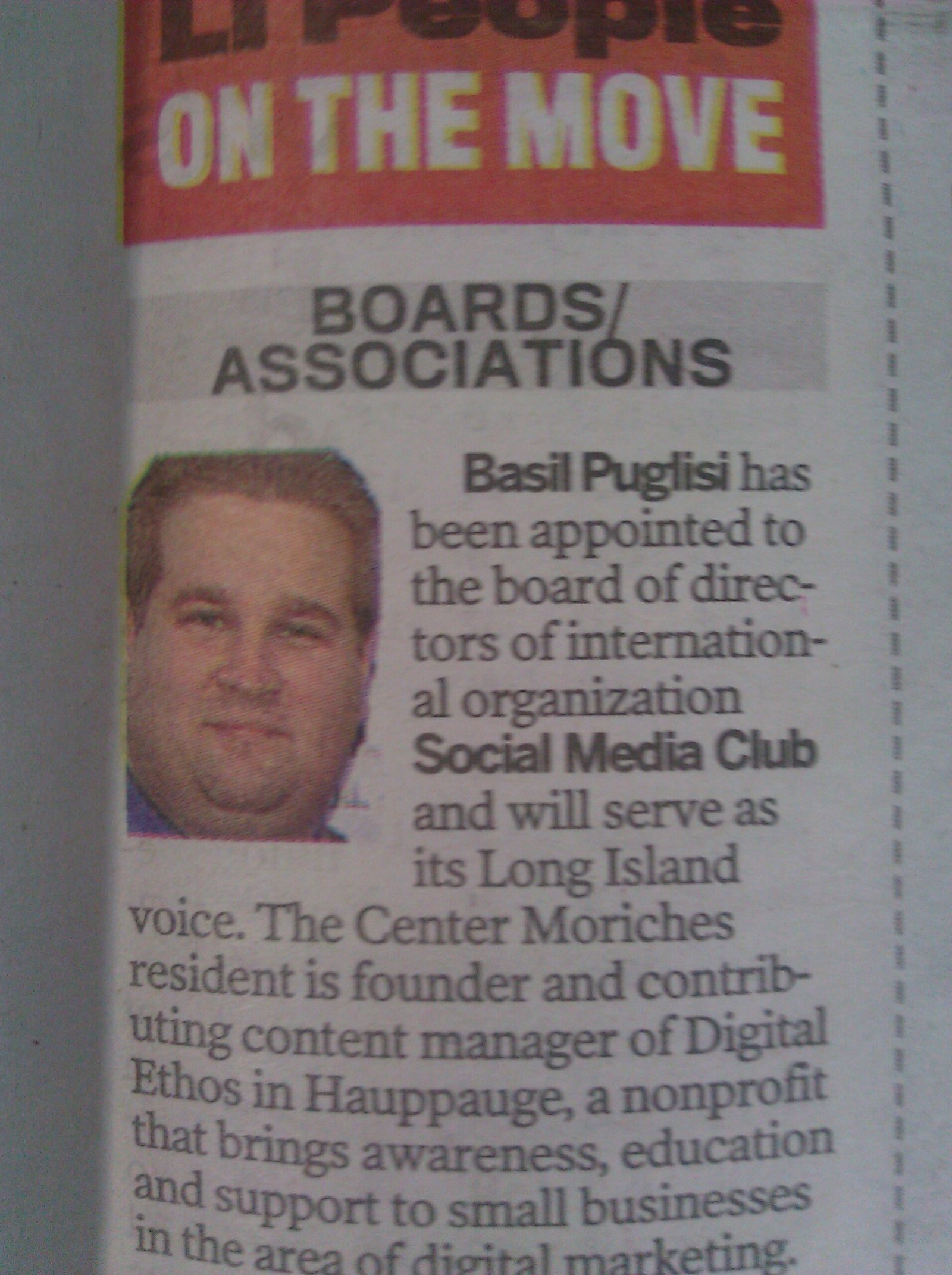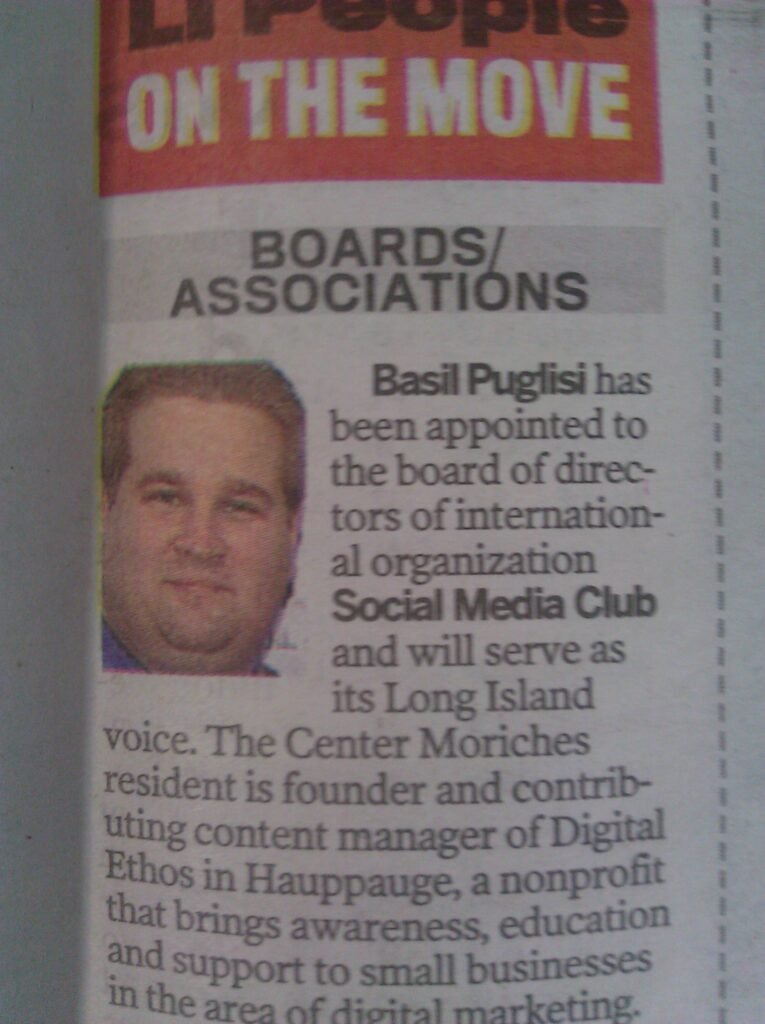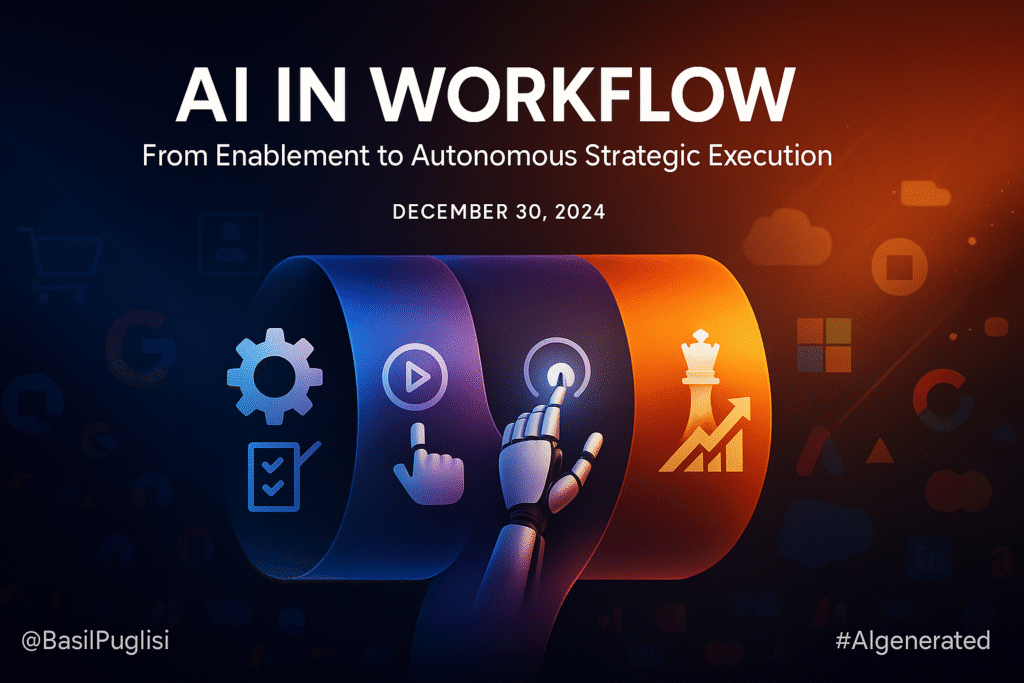
What Happened
Over the second half of 2024, AI’s role in business operations accelerated through three distinct phases — enabling workflows, autonomizing execution, and integrating strategic intelligence. This evolution wasn’t just about adopting new tools; it represented a fundamental shift in how organizations approached productivity, decision-making, and market positioning.
Enablement (June) – The summer brought a surge of AI releases designed to remove friction from existing workflows and give teams immediate productivity gains.
- eBay’s “Resell on eBay” feature tapped into Certilogo digital apparel IDs, allowing sellers to instantly generate complete product listings for authenticated apparel items. This meant resale could happen in minutes instead of hours, with accurate details pre-filled to boost buyer trust and reduce listing errors.
- Google’s retail AI updates sharpened product targeting and recommendations, using more granular behavioral data to serve ads and promotions to the right audience at the right time.
- ServiceNow and IBM’s AI-powered skills intelligence platform created a way for HR and learning teams to map current workforce skills, identify gaps, and match employees to development paths that align with business needs.
- Microsoft Power Automate’s Copilot analytics gave operations teams a lens into automation performance, surfacing which processes saved the most time and which still contained bottlenecks.
Together, these tools represented the Enablement Phase — AI acting as an accelerant for existing human-led processes, improving speed, accuracy, and visibility without fully taking over control.
Autonomization (October) – By early fall, the conversation shifted from “how AI can help” to “what AI can run on its own.”
- Salesforce’s Agentforce introduced customizable AI agents for sales and service, capable of autonomously following up with leads, generating proposals, and managing support requests without manual intervention.
- Workday’s AI agents expanded automation into HR and finance, handling tasks like job posting, applicant screening, onboarding workflows, and transaction processing.
- Oracle’s Fusion Cloud HCM agents targeted similar HR efficiencies, but with a focus on accelerating talent acquisition and resolving HR service tickets.
- In the events sector, eShow’s AI tools automated agenda creation, personalized attendee engagement, and coordinated on-site logistics — allowing organizers to make real-time adjustments during events without manual scheduling chaos.
This was the Autonomization Phase — AI graduating from an assistant role to an operator role, managing end-to-end workflows with only exceptions escalated to humans.
Strategic Integration (November) – By year’s end, AI was no longer just embedded in operational layers — it was stepping into the role of strategic advisor and decision-shaper.
- Microsoft’s autonomous AI agents could execute complex, multi-step business processes from start to finish while incorporating predictive planning to anticipate needs, allocate resources, and adjust based on real-time conditions.
- Meltwater’s AI brand intelligence updates added always-on monitoring for brand health metrics, sentiment shifts, and media coverage, along with an AI-powered journalist discovery tool that matched organizations with reporters most likely to engage with their story.
This marked the Strategic Integration Phase — AI providing not just execution power, but also contextual awareness and forward-looking insight. Here, AI was influencing what to prioritize and when to act, not just how to get it done.
Across these three phases, the trajectory is clear: June’s tools enabled efficiency, October’s agents autonomized execution, and November’s platforms strategized at scale. In six months, AI evolved from speeding up workflows to running them independently — and finally, to shaping the decisions that define competitive advantage.
Who’s Impacted
B2B – Retailers, marketplaces, HR departments, event planners, and executive teams gain faster cycle times, automation coverage across functions, and AI-driven strategic intelligence for decision-making.
B2C – Customers and job applicants see faster service, personalized experiences, and more consistent engagement as autonomous systems streamline delivery.
Nonprofits – Development teams, advocacy groups, and mission-driven organizations can scale donor outreach, volunteer onboarding, and campaign intelligence without expanding headcount.
Why It Matters Now
Fact: eBay’s “Resell on eBay” tool and Google retail AI updates accelerate resale listings and sharpen product targeting.
Tactic: Integrate enablement AI into eCommerce and marketing workflows to reduce manual entry time and improve targeting accuracy.
Fact: Salesforce’s Agentforce and Workday’s HR agents automate sales follow-up, onboarding, and case resolution.
Tactic: Deploy role-specific AI agents with performance guardrails to handle repetitive workflows, freeing teams for higher-value activities.
Fact: Microsoft’s autonomous agents and Meltwater’s brand intelligence tools combine execution and strategic oversight.
Tactic: Pair autonomous workflow AI with market intelligence dashboards to inform proactive, KPI-driven strategic shifts.
KPIs Impacted: Listing creation time, product recommendation conversion rate, automation efficiency score, sales cycle length, time-to-hire, process automation rate, brand sentiment score, journalist outreach response rate.
Action Steps
- Audit current AI usage to identify opportunities across Enable → Autonomize → Strategize stages.
- Pilot one autonomous workflow with clear success metrics and oversight protocols.
- Connect operational AI outputs to brand and market intelligence platforms.
- Review KPI benchmarks quarterly to measure efficiency, agility, and strategic impact.
“When AI runs the process and watches the brand, leaders can focus on steering strategy instead of chasing execution.” – Basil Puglisi
References
- Digital Commerce 360. (2024, May 16). eBay releases new reselling feature with Certilogo digital ID. Retrieved from https://www.digitalcommerce360.com/2024/05/16/ebay-releases-new-reselling-feature-with-certilogo-digital-id
- Salesforce. (2024, September 17). Dreamforce 24 recap. Retrieved from https://www.salesforce.com/news/stories/dreamforce-24-recap/
- GeekWire. (2024, October 21). Microsoft unveils new autonomous AI agents in advance of competing Salesforce rollout. Retrieved from https://www.geekwire.com/2024/microsoft-unveils-new-autonomous-ai-agents-in-advance-of-competing-salesforce-rollout/
- Meltwater. (2024, October 29). Meltwater delivers AI-powered innovations in its 2024 year-end product release. Retrieved from https://www.meltwater.com/en/about/press-releases/meltwater-delivers-ai-powered-innovations-in-its-2024-year-end-product-release
Closing / Forward Watchpoint
The Enable → Autonomize → Strategize progression shows AI moving beyond support roles into leadership-level decision influence. In 2025, expect competition to center not just on what AI can do, but on how fast organizations can integrate these layers without losing control over governance and brand integrity.
